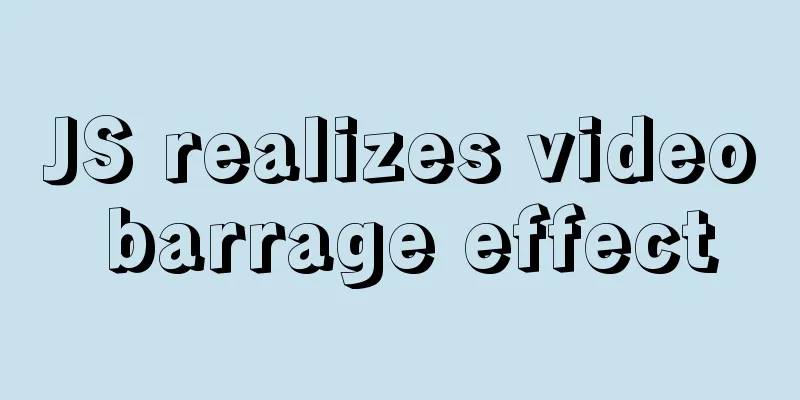$nextTick explanation that you can understand at a glance

1. Functional descriptionToday we are going to implement this small function; after the page is rendered, a div element is displayed; when this div element is clicked, the div element disappears; an input element appears; and the input element is focused. I believe everyone thinks it is simple, let's take a look~ Create a component named NextTick.vue; Introducing registration in the page 2. Parent component
<template>
<div>
<next-tick></next-tick>
</div>
</template>
<script lang="ts">
import NextTick from "../components/NextTick.vue"
export default {
name:"About",
components:{
NextTick
},
}
</script>
3. Subcomponent NextTick.vue
<template>
<div>
<div>I am a component</div>
<div v-if="flag" class="sun" @click="handerClick">Show input</div>
<input v-else ref="inputRef" class="yuelaing"/>
</div>
</template>
<script>
export default {
data(){
return {
flag:true,
}
},
methods: {
handerClick(){
this.flag=false;
this.$refs.inputRef.focus();
},
},
}
</script>
4Why is it undefined?this.flag=false; this.$refs.inputRef.focus(); When executing page operations, this.$refs.inputRef.focus(); It takes time (it has not been refreshed yet; it is still an old page) The DOM element has not been obtained at this time. So it will report an error. Solution 1: So just let the page get the element; use setTimeout
setTimeout(()=>{
this.$refs.inputRef.focus();
},100)
It is possible to deal with this problem in this way; But it seems very unprofessional; Solution 2:
//When the component is re-rendered on the view according to the latest data, the function this.$nextTick(()=>{
this.$refs.inputRef.focus();
})
5. Can changing v-if to v-show get the focus?Some people say: Because v-if is dynamically created and destroyed; the process of creation and destruction takes time! That is why v-if cannot get the element node, which can be avoided by using v-show. Do you think what you said makes some sense? Let's try replacing v-if with v-show
<template>
<div>
<div>I am a component</div>
<div v-show="flag" class="sun" @click="handerClick">Show input</div>
<input v-show="!flag" ref="inputRef" class="yuelaing"/>
</div>
</template>
<script>
export default {
data(){
return {
flag:true,
}
},
methods: {
handerClick(){
this.flag=false;
console.log( this.$refs.inputRef );
this.$refs.inputRef.focus();
},
},
}
</script>
6. Actual ResultsWe found that although the page did not report an error, it was not focused; changing to v-show obviously did not solve this problem The reason for this problem is that after this.flag=false in the child component, the following code is executed immediately
However, when executing, the view has not been refreshed yet; it is still the old page, and the DOM element cannot be obtained at this time, so undefined appears; that is why we can focus after adding a delay; When the component is re-rendered on the view based on the latest data, the function inside is executed This is the basic usage of $nextTick
this.$nextTick(()=>{
this.$refs.inputRef.focus();
})
7. Can I get the focus by turning a component into a page?Others say: Because it is a child component, the child component is rendered after the parent component. So no element node was obtained. This is also the reason... I feel like what the previous friend said is not right, in order to solve the doubts. We decided to turn the subcomponent into a page and see
<template>
<div>
<div>I am a component</div>
<div v-show="flag" class="sun" @click="handerClick">Show input</div>
<input v-show="!flag" ref="inputRef" class="yuelaing"/>
</div>
</template>
<script>
export default {
data(){
return {
flag:true,
}
},
methods: {
handerClick(){
this.flag=false;
this.$refs.inputRef.focus();
},
},
}
</script>
We found that it still doesn't work; this fully illustrates that after updating the data, Vue is not updated in real time. There is a time difference between data being updated and displayed on the page. If we call the page data within the time difference, we will not be able to obtain it. In other words: Vue executes asynchronously when updating the DOM 8. Why is there $nextTickThe reason for $nextTick is that after the data in Vue changes, the DOM on the view will not be updated immediately; it takes time to update the DOM Let's take a look at this through a small experiment
<template>
<div>
<div ref="unique">
<h1>{{ cont }}</h1>
</div>
<div class="sun" @click="handerClick">Change value</div>
</div>
</template>
<script>
export default {
data(){
return {
cont:'I am the default value'
}
},
methods: {
handerClick(){
this.cont = 'I changed the default value';
console.log('1==>',this.$refs.unique.innerText);
this.$nextTick(()=>{
console.log('2==>',this.$refs.unique.innerText);
})
},
},
}
</script>
We found that the first value and the second value are different, because the update of DOM on the view needs to be in between. We get the element value within this difference, and it is still the old value. So the first value is the initial value, and the second value is the changed value. Since we hope to update the data, we can still get the value on the DOM immediately So vue provides $nextTick to solve this problem 9. Difference between Vue.nextTick and this.$nextTickVue.nextTick is a global method this.$nextTick( [callback] ) is an instance method. We all know that a page can have multiple instances, which means that this.$nextTick can be accurate to a certain instance. In fact, the two are essentially the same. 10. A little trick for using nextTickWe all know that when the lifecycle mounted is rendered, it cannot be 100% guaranteed that all subcomponents can be rendered, so we can use this.$nextTick in mounted to ensure that all subcomponents can be rendered. The mounted hook is not called during server-side rendering.
mounted: function () {
this.$nextTick(function () {
//When the data changes,
//After re-rendering on the view, execute the method inside //This sentence is equivalent to:
// Delay the callback until the next DOM update cycle // Equivalent to: after modifying the data, then waiting for the DOM to update before executing })
}
SummarizeThis is the end of this article about $nextTick. For more information about $nextTick, please search for previous articles on 123WORDPRESS.COM or continue to browse the following related articles. I hope you will support 123WORDPRESS.COM in the future! You may also be interested in:
|
<<: Tutorial on customizing rpm packages and building yum repositories for Centos
>>: You may not know these things about Mysql auto-increment id
Recommend
Idea packaged into war package deployed to tomcat and access path issues (illustration and text)
The most important thing for idea to package a we...
Using an image as a label, the for attribute does not work in IE
For example: Copy code The code is as follows: <...
js drag and drop table to realize content calculation
This article example shares the specific code of ...
Use of SerialPort module in Node.js
Table of contents Purpose Module Installation Bas...
Detailed explanation of the English names corresponding to the font-family of Chinese fonts in CSS styles
Songti: SimSun Bold: SimHei Microsoft YaHei: Micr...
Tomcat Nginx Redis session sharing process diagram
1. Preparation Middleware: Tomcat, Redis, Nginx J...
How to deploy Redis 6.x cluster through Docker
System environment: Redis version: 6.0.8 Docker v...
How to start a transaction in MySQL
Preface This article mainly introduces how to sta...
MySQL database master-slave replication and read-write separation
Table of contents 1. Master-slave replication Mas...
Example code of CSS responsive layout system
Responsive layout systems are already very common...
Detailed explanation of nginx upstream configuration and function
Configuration Example upstream backend { server b...
MySQL multi-table join introductory tutorial
Connections can be used to query, update, and est...
How to implement draggable components in Vue
This article shares with you how to implement dra...
Let's talk about my understanding and application of React Context
Table of contents Preface First look at React Con...
Standard summary for analyzing the performance of a SQL statement
This article will introduce how to use explain to...












